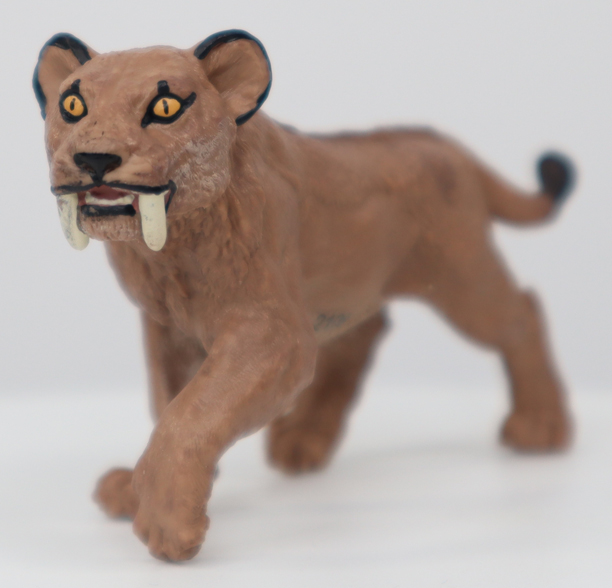Sabre-Toothed Cats are not Closely Related to Tigers
Smilodon et al are not Related to Tigers
The phrase “Sabre-Tooth Tiger” is often used to describe species of the genus Smilodon. We are not sure how this phrase entered the public’s consciousness, but we do here it quite frequently. Team members at Everything Dinosaur have encountered this term on a number of occasions recently, as they have been talking about the launch of a new model of a Smilodon – Sabre-toothed cat from Papo of France.
Often these animals are referred to as “Sabre-Tooth Tigers”, we do use this terminology in order to assist customers with queries and product searches but the name is confusing as Sabre-tooths (genus name Smilodon), are not actually that closely related to tigers.
The genus name – Smilodon means “knife tooth” in recognition of the large upper canines these animals possessed. In a large Smilodon; such as Smilodon fatalis, the upper canines could be up to 18 cm long. The jaws on Sabre-toothed cats were specially adapted to open wide and could gape to 120° (an African lion can open its jaws to about 70°), this would have permitted Smilodon to close its jaws around the neck of its victim and puncture vital blood vessels to the brain and sever the windpipe leading to a quick kill. However, these teeth are quite delicate and could shatter if they bit down onto bone.
A Papo Young Smilodon Model
Picture credit: Everything Dinosaur
To view the Everything Dinosaur prehistoric animal models and dinosaur toys including the Papo range of dinosaurs and prehistoric animal figures: Papo Dinosaurs and Prehistoric Animal Models.
The popular name “Sabre-Tooth Tiger” is misleading. Smilodon was not closely related to modern tigers, although they were members of the cat family – Felidae. The Sabre-tooths belonged to a sub-family of the cats, called the machairodonts which can be dated back to around 12 million years ago. None of us at Everything Dinosaur can recall when the term “Sabre-Tooth Tiger” came into use, but technically it is inaccurate to describe these extinct predators as “tigers”.


